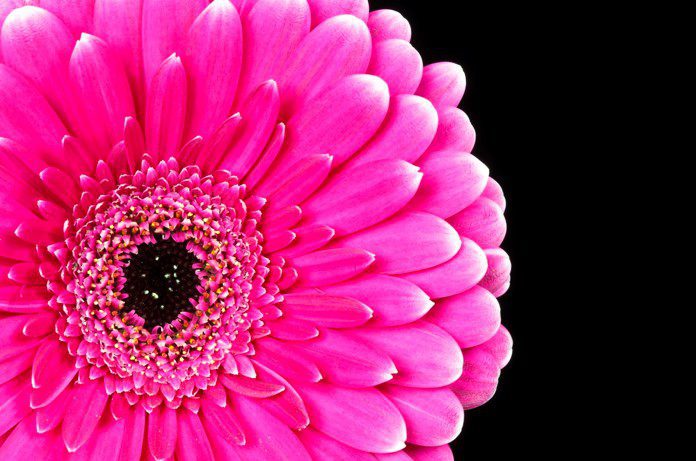Gerbera daisies, with their cheerful blooms and a vast array of colors, are popular additions to gardens and containers alike. This guide will equip you with the knowledge to cultivate these stunning flowers and bring bursts of color to your space.
Ideal Environment
- Sunlight: Gerbera daisies thrive in sunshine, ideally receiving around 6 hours of direct sunlight daily. In hot climates, some afternoon shade might be beneficial.
- Temperature: A temperature range of 65-70°F is ideal for Gerbera daisies. They can tolerate cooler weather but struggle in extreme heat.
- Soil: Plant your Gerbera daisies in well-draining, loamy soil with a slightly acidic to neutral pH (around 6.0 to 7.0). Amending your soil with compost or organic matter can improve drainage and provide additional nutrients.
Planting and Care
- Watering: Provide consistent moisture, keeping the top inch or two of soil damp but not soggy. Allow the soil to dry slightly between waterings. Water in the morning to allow leaves to dry throughout the day and prevent rot.
- Feeding: For in-ground plantings, use a balanced fertilizer every 6-8 weeks. For container plantings, dilute a balanced fertilizer solution to half-strength to avoid harming the roots. Slow-release fertilizers can also be used as directed on the label.
- Propagation: Gerbera daisies can be propagated from seeds or by dividing established clumps. Seedlings require warm temperatures and controlled environments for germination. To divide clumps, carefully separate healthy sections with roots and replant them, ensuring the crown remains slightly above the soil surface.
Maintenance
- Pruning: Deadheading spent flowers (removing them at the stem) encourages continuous blooming. You can also remove old, yellowing leaves to improve air circulation and prevent fungal diseases.
- Hardiness: Gerbera daisies are moderately hardy. Chilly weather might damage the foliage, but the plants will typically bounce back from buds near the ground. Protect them from frost in colder climates by covering them with frost cloth or bringing them indoors.
- Pests and Diseases: Powdery mildew and leaf spots are common issues. Proper watering practices (avoiding soggy soil) and good air circulation can help prevent these problems. For severe cases, fungicides from your local garden center can be used. Watch out for slugs and snails that might feed on the leaves; handpicking or organic controls like diatomaceous earth can manage these pests.
Growing Tips
- Plant Gerbera daisies with the crown (where the leaves and stems meet) slightly above the soil line to prevent crown rot.
- Gerbera daisies grown from seed might take longer to flower than established plants, sometimes up to several months. Opting for established plants from nurseries can provide quicker blooms.
- Consider companion planting with herbs like basil or mint to deter some pests naturally.
- Deadheading not only encourages more blooms but also improves the plant’s overall appearance.
- Gerbera daisies are relatively low-maintenance but appreciate a little pampering. By providing the right care, you can extend their blooming period and enjoy their beauty for longer.

Seasonal Variations
- Spring and Fall: These seasons provide ideal temperatures for Gerbera daisies, with plenty of blooms and consistent growth. Watering needs might be slightly higher during hot spells, but overall care remains consistent.
- Summer: During hot summers, flowering might decrease. You can provide some afternoon shade and increase watering frequency to compensate for evaporation. Be mindful of the risk of fungal diseases due to higher humidity and adjust watering accordingly.
Alternative Blooming (Encouraging Summer Blooms)
- While Gerbera daisies naturally flower during cooler months, you can try some techniques to encourage summer blooms potentially:
- Pinching: Pinch back young stems to promote bushier growth and potentially more flowers.
- Cooler Microclimate: If possible, create a cooler microclimate around your plants with shade cloth or strategically planted taller plants.
- Maintaining Cool Soil: Mulch around the base of the plant to help retain moisture and keep the soil cooler.
- Deadheading More Frequently: Removing spent flowers more often during summer might encourage the plant to produce more blooms to compensate. However, be aware that this technique might stress the plant.
Troubleshooting
- Leggy Growth: This can be caused by insufficient sunlight. Ensure your Gerbera daisies receive at least 6 hours of sunlight daily.
- Wilting Leaves: This could be a sign of underwatering or overwatering. Check the soil moisture and adjust your watering routine accordingly.
- Lack of Blooms: This might be due to incorrect temperatures, insufficient light, or nutrient deficiency. Ensure proper care based on the season and fertilize as needed.
Enjoyment
Gerbera daisies bloom throughout the cooler months, adding vibrant pops of color to gardens, patios, and containers. Their long stems and diverse color range (red, pink, orange, yellow) make them perfect for bouquets and butterfly gardens. With proper care, you can enjoy these beautiful flowers throughout the season.
Bringing Indoors (For Potted Gerbera Daisies)
- As winter approaches, you can bring your potted Gerbera daisies indoors to enjoy their blooms longer. Choose a sunny location with at least 6 hours of indirect sunlight daily.
- Reduce watering frequency as the plant enters a semi-dormant state during winter.
- You can continue feeding with a diluted fertilizer solution once a month during this period.
- Be mindful of indoor pests like spider mites, especially in dry conditions. Regularly monitor your plant and address any pest issues promptly.


























